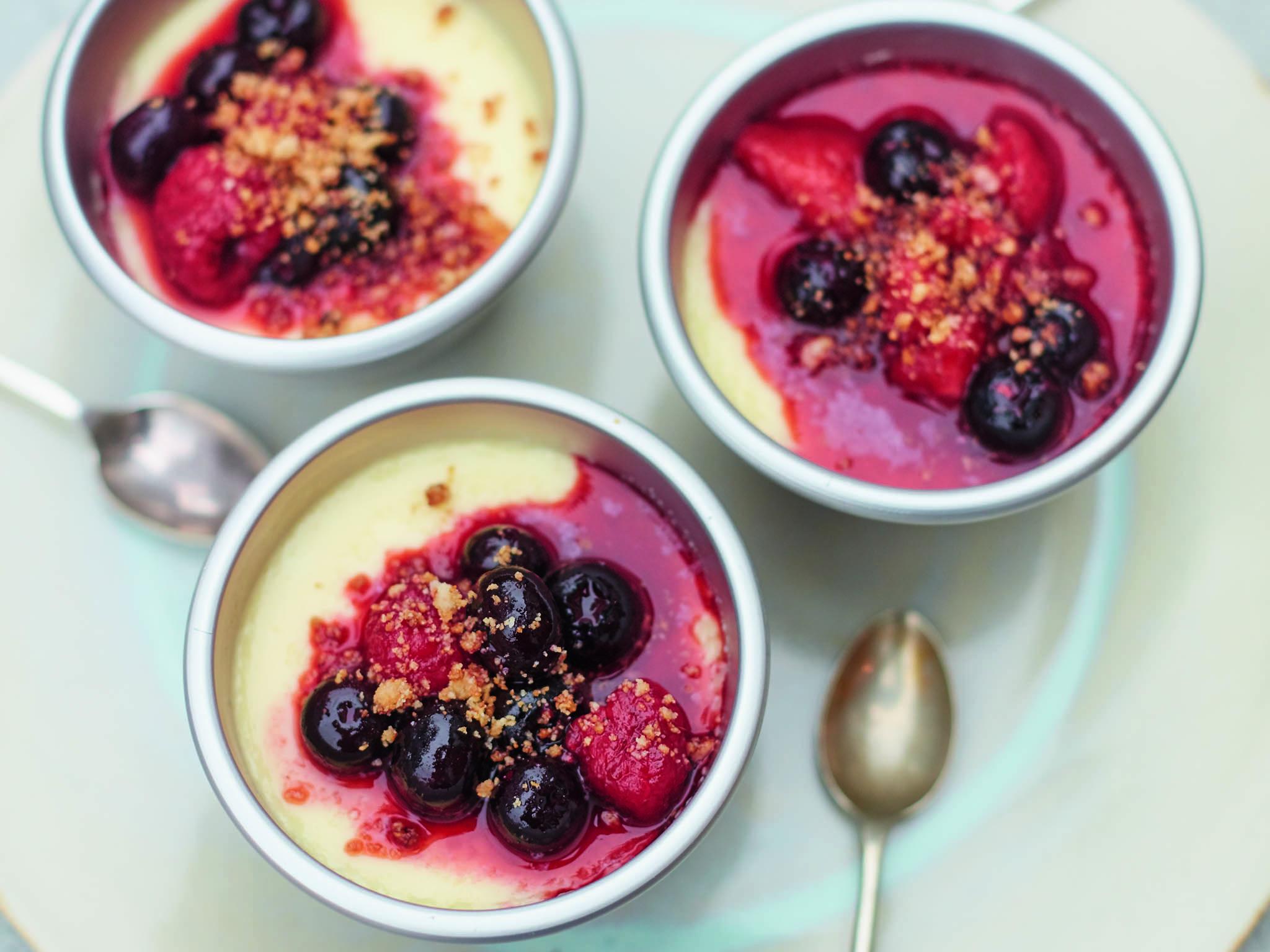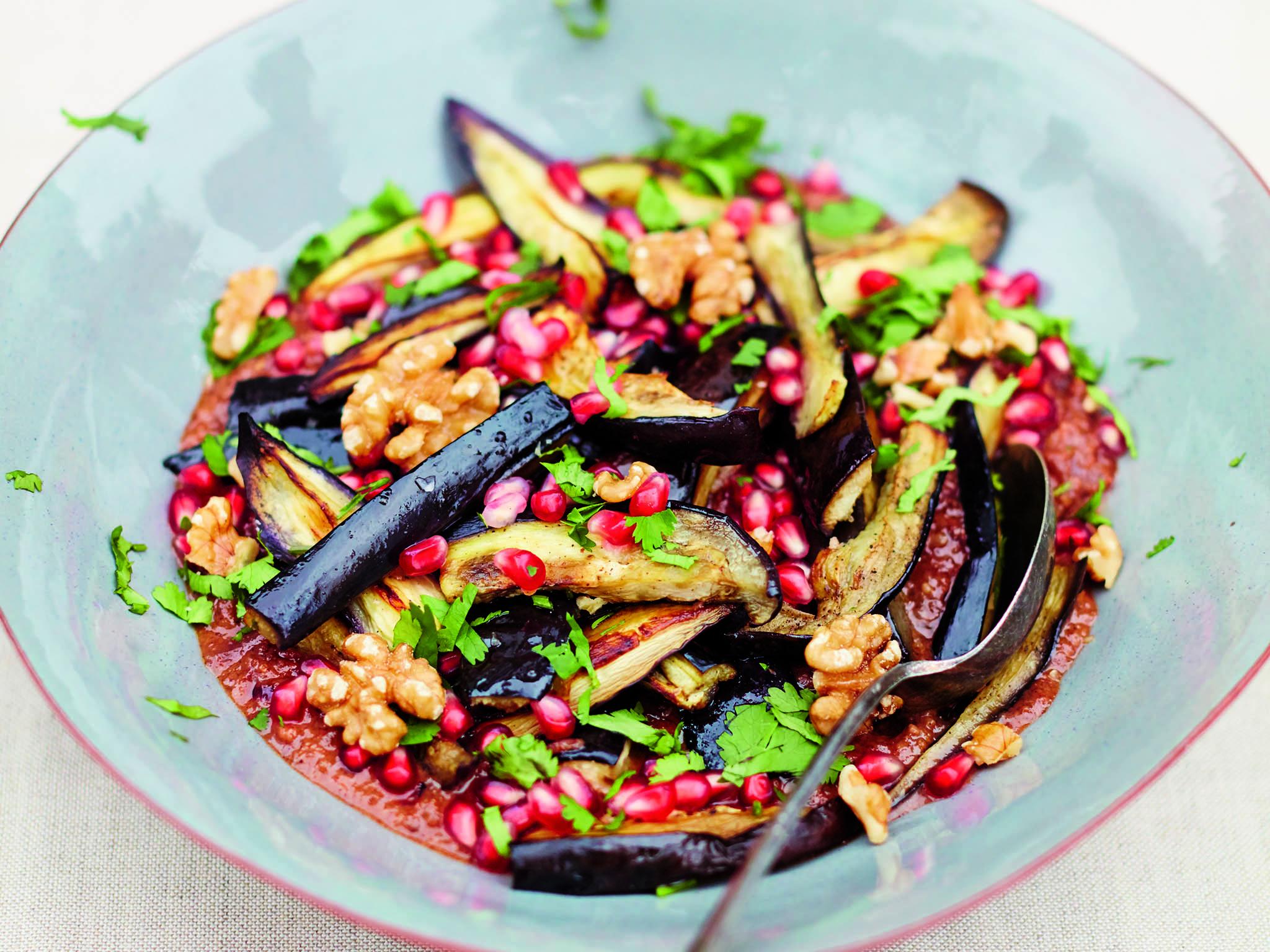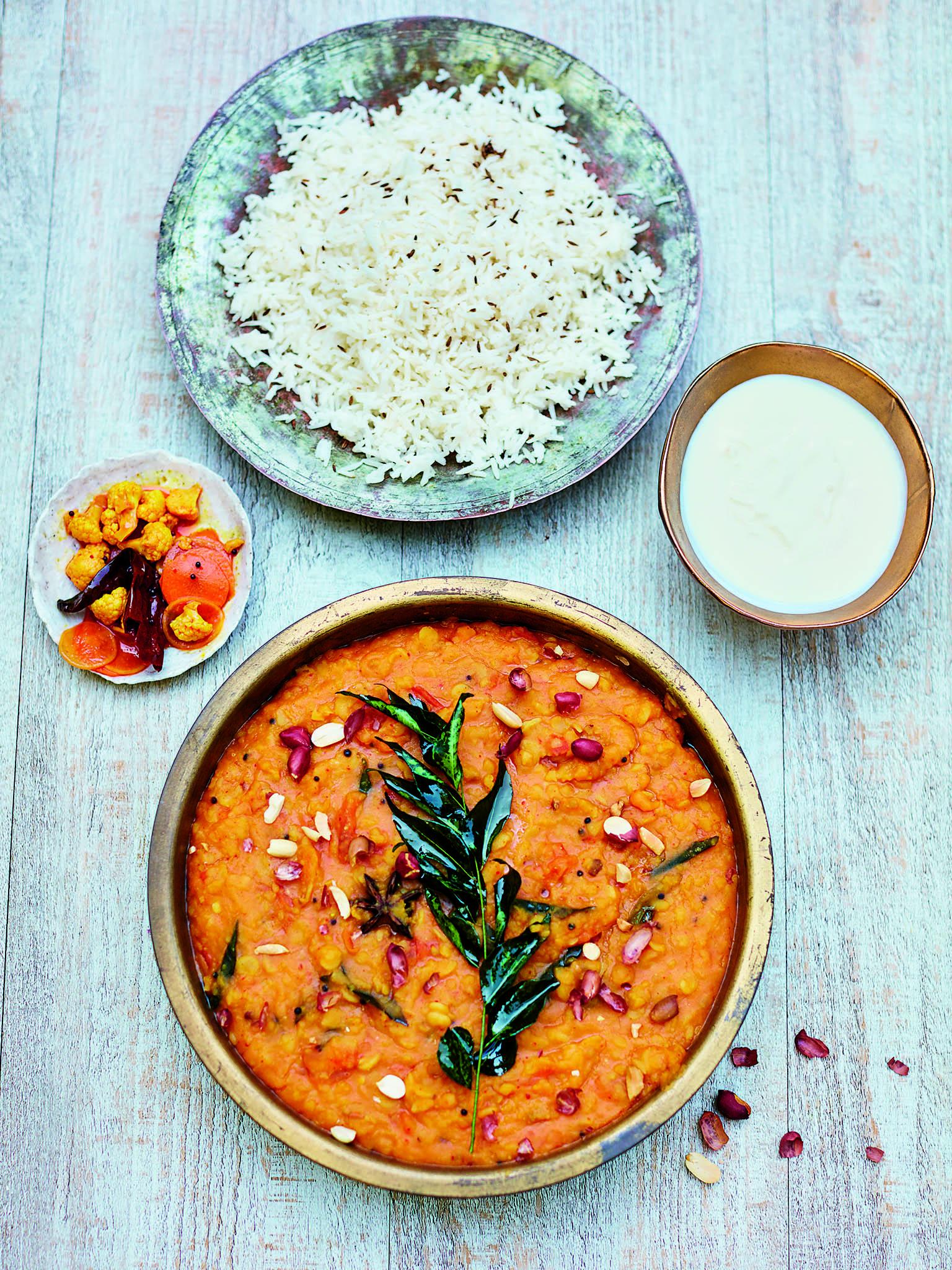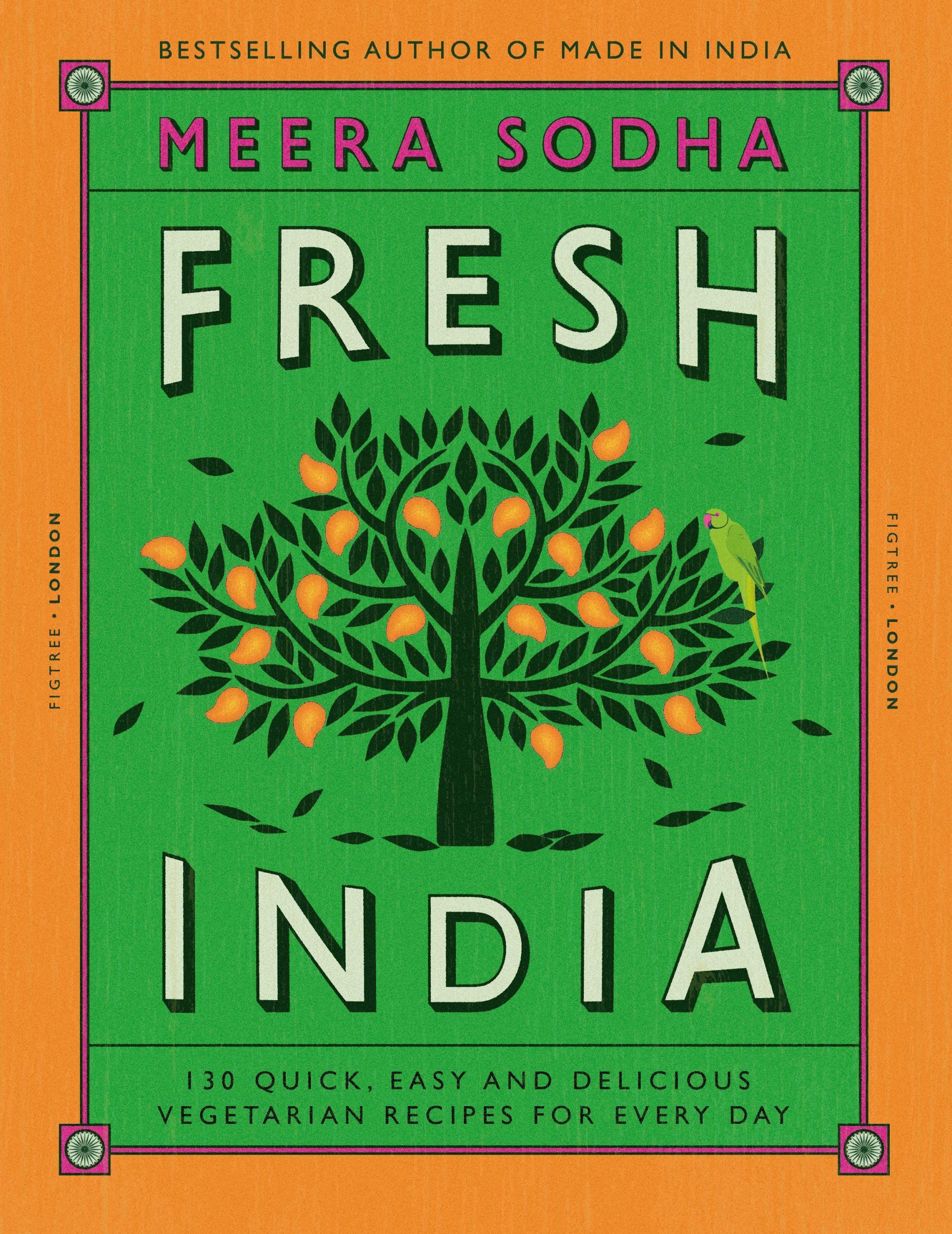Fresh India: How to make easy everyday vegetarian recipes
From the author that brought us Made in India, Meera Sodha's second book, Fresh India, is a vegetarian only cookbook for everyday recipes

Your support helps us to tell the story
From reproductive rights to climate change to Big Tech, The Independent is on the ground when the story is developing. Whether it's investigating the financials of Elon Musk's pro-Trump PAC or producing our latest documentary, 'The A Word', which shines a light on the American women fighting for reproductive rights, we know how important it is to parse out the facts from the messaging.
At such a critical moment in US history, we need reporters on the ground. Your donation allows us to keep sending journalists to speak to both sides of the story.
The Independent is trusted by Americans across the entire political spectrum. And unlike many other quality news outlets, we choose not to lock Americans out of our reporting and analysis with paywalls. We believe quality journalism should be available to everyone, paid for by those who can afford it.
Your support makes all the difference.Indian-born and London-living Meera Sodha shows a whole new side to Indian cooking, without meat and easy dishes to make at home. Her recipes are made up from easy-to-find ingredients to create Indian favourites from mushroom and walnut samosas to beetroot and paneer kebabs.
Alongside well-known Indian dishes from dals and pickles, she also uses British favourites to make Brussels sprout Thoran – a take of the coconut based dish. As India has more than 500 million non-meat eaters, it is one of the best countries in the world for meat-free recipes – and you don’t need to be vegetarian to enjoy them. Here are three recipes from the book, for a starter, main and desert.

Auberguine Fesenjan
The first time I met my husband was in his kitchen. He was standing amid a mountain of empty pomegranate shells and the kitchen looked like a crime scene, with red juice splattered up the walls. He wanted to impress me with this fesenjan, a dish that was often found on the tables of Indian Mughal emperors in the 1500s and 1600s but originally from Persia. Luckily, these days you can buy pomegranate molasses – which is what I told him (and it broke the ice). We got married last summer and now cook this dish together with good memories and much less mess.
NOTE: You will need a food processor to grind the walnuts.
Serves 4 as a main course
120g walnuts
4 medium (1.2kg) aubergines
rapeseed oil
salt and ground black pepper
2 large red onions, thinly sliced
2 cloves of garlic, crushed
1½ tablespoons honey
¾ tsp chilli powder
1 tsp ground cinnamon
2 tbsp pomegranate molasses
250ml/8 floz hot vegetable stock
seeds from 1 pomegranate
a handful of fresh coriander
Preheat the oven to 200°C/400°F/gas 6 and line a large baking tray with lightly oiled foil. Blitz the walnuts in a food processor to a fine crumb and leave to one side.
Cut the aubergines into 5cm x 2cm (2in x 1in) batons, toss with oil, season lightly with salt and black pepper, and roast on the baking tray for 25 minutes or until meltingly soft.
While the aubergines are roasting, make the fesenjan sauce. Put 3 tablespoons of oil into a large frying pan over a medium heat and, when hot, add the red onions. Fry for 12 minutes, stirring regularly to ensure they don’t burn, then add the garlic and fry for a further 3 minutes. Add the honey, chilli powder, cinnamon, ½tsp of salt, 1tsp black pepper, the blitzed walnuts and the pomegranate molasses to the pan, and stir thoroughly to mix. Then add the vegetable stock and cook for around 8 minutes, until the sauce comes together.
When the aubergines are tender, pour the sauce into a serving dish. Put the aubergines on top, and scatter with the pomegranate seeds and coriander. Serve alongside steamed basmati rice.

Gujarati dal with peanuts and star anise
This dal is my and every other Gujarati’s taste of home. One spoonful and I am transported. It has a more complex taste than most dals due to the subtle jabs of star anise, curry leaves and lemon, all rounded off with the sweetness of honey. Because of the time it takes to soak and cook toor lentils, this is more of a weekend dish in our house, although a daily staple across Gujarat.
Serves 4 as part of a main course
300g/10oz yellow toor lentils
2 star anise
rapeseed oil
½tsp mustard seeds
1tsp cumin seeds
4 whole cloves
1 green finger chilli, slit lengthways
2 sprigs of fresh curry leaves
3 large ripe tomatoes, chopped
½tsp ground turmeric
1⅓tsp salt
2½tsp runny honey
1½ tbsp lemon juice
30g/1oz red-skinned peanuts, crushed
Soak the toor lentils in cold water overnight, or in warm water for an hour before cooking. When soaked, wash the lentils in a few changes of cold water until the water runs clear, then place in a saucepan and cover with 4cm of cold water. Add the star anise and set to boil over a medium heat. The lentils will take around an hour to become tender (so you can crush them easily with the back of a spoon), and you may need to remove the scum that forms, using a large spoon. While the lentils cook, you can prepare the tempering.
Put 2tbsp of oil into a frying pan over a medium heat. When hot, add the mustard seeds, cumin seeds, cloves, green chilli and 6 curry leaves. Stir-fry for 2 to 3 minutes, until you can smell the spices, then add the tomatoes. Cook for around 5 minutes, until the tomatoes become soft and paste-like, then add the turmeric, salt, honey and lemon juice. Cook for a couple of minutes, then turn off the heat.
When the lentils are cooked, whisk them to thicken, then add the tempering. The mixture will be quite thick, and Gujarati dal is normally thin, so add at least 200ml of hot water (or as you prefer), then simmer for a further 15 minutes. Check that the salt, lemon, chilli and honey are to your liking, then take off the heat.
Put another tablespoon of oil into a separate frying pan and, when hot, add a sprig of curry leaves and the crushed nuts. Fry until the curry leaves crisp up and the peanuts brown, then take off the heat. Transfer the dal to a serving dish and scatter over the curry leaves and the peanuts. Serve with steamed basmati rice, a green leafy vegetable curry like the savoy cabbage, black kale and potato subji, and a side of yoghurt and pickles.
Bengal baked curd with tamarind berries
My dad’s favourite pudding is cheesecake. While the rest of us plan our meals around mains, he’s already sidled up to the dessert trolley. American style, Italian and even Greens Original (the packet stuff): he loves them all. But this year, I thought I’d create a special sort of Indian cheesecake for him, using yoghurt instead of cheese. This is a variation on a Bengali set yoghurt called “mishti doi”; the finished dish tastes similar to cheesecake but is much lighter – still rich and creamy, just not as dense. The tamarind berries and nuts add a sharp and crunchy contrast. Happy 65th birthday, Dad.
NOTES: You’ll need to make this a few hours ahead of serving so that the yoghurt has time to set. You’ll also need four small ramekins.
Serves 4
250ml/8floz Greek yoghurt
200ml/7floz condensed milk
150ml/5floz double cream
50g/2oz ground almonds
10g/½oz unsalted butter
sugar
300g/10oz mixed berries (e.g. raspberries, blueberries and strawberries)
1tsp tamarind paste (or to taste)
Preheat the oven to 150°C/300°F/gas 2. Pour the yoghurt, condensed milk and double cream into a bowl and whisk until fully mixed, then divide between the ramekins. Place the ramekins in a deep roasting tray and pour enough just-boiled water around them to reach two-thirds up their sides. Bake for 25 minutes, then remove from the oven, leave to cool, and refrigerate for a couple of hours until set. When set, put the almonds, butter and 1½ teaspoons of sugar into a non-stick saucepan over a medium heat. Stir continuously for a couple of minutes until the almonds start to brown and form big crumbs, then tip into a bowl.

To make the tamarind berries, cut any larger berries (like strawberries) to the same size as the smaller ones. Tip them into a saucepan along with 2 tablespoons of sugar, 3 tablespoons of water and the tamarind paste. Heat for 2 to 3 minutes, until the berries start to soften. Taste, as you may need to add more sugar depending on your berries, then take off the heat. You can either serve the berries warm or cold, but I prefer to serve them cold. To assemble the baked yoghurts, spoon over the tamarind berries and sprinkle with the toasted almonds.
Fresh India, by Meera Sodha. Published by Fig Tree, £20
Join our commenting forum
Join thought-provoking conversations, follow other Independent readers and see their replies
Comments